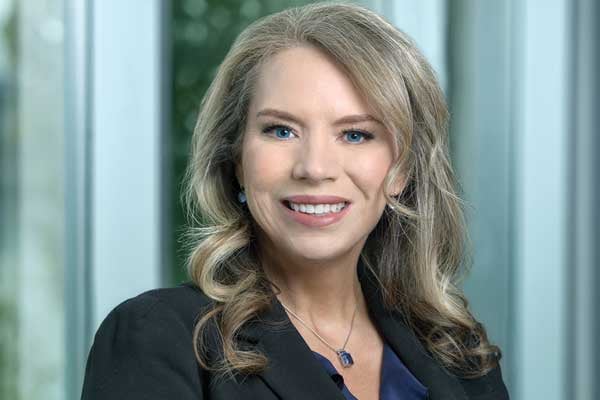Mentorship program will help women support each other's career development

Paula Campkin knows what it’s like to be the odd woman out. As the vice-president and chief safety officer for Energy Safety Canada, she is one of the few women at the C-suite level. Throughout her career, she has attended many meetings where she was the only female in the room. When she first started out in the construction industry, she was surrounded by men. But she is setting out to change this. Campkin and a group of female safety professionals in Alberta have launched the Women in Occupational Health & Safety Society (WOHSS) to bring more women into the profession and support their advancement, from entry-level to the C-suite.
“Safety is an emerging profession and although the number of women entering is rising, we are still underrepresented,” says Campkin, who is the chairperson of WOHSS.
In 2016, only 38 per cent of safety professionals certified by the Board of Canadian Registered Safety Professionals (BCRSP) were female, which is a good indication of the trend throughout the profession, Campkin says.
The safety profession can be very challenging for women because it is a male-dominated industry, she says. For example, personal protective equipment is usually tailored to men, so finding equipment that fits properly is a challenge. Additionally, there can be concerns around personal safety when working at remote camps.
“There’s the whole issue of harassment in the workplace and how do you navigate these challenges as a woman and being able to assert yourself without coming across as the dreaded B word?” Campkin says. “Those are some of the specific challenges that we face that our male counterparts don’t have to think about.”
The idea for a group devoted to promoting women in the occupational health and safety profession came about 15 years ago when women in the Calgary chapter of the Canadian Society of Safety Engineering (CSSE) expressed frustration about the lack of female mentors. They wanted to be able to go to other women for advice on the specific challenges they were facing. An attempt had been made at that time to start a group, but it wasn’t able to get off the ground.
In 2014, Campkin was approached by a few individuals about resurrecting this idea, but she was just too swamped with other responsibilities and board positions at the time.
“But the idea really resonated with me,” recalls Campkin. “It came up again in 2016 and I had come off some boards, so I jumped on it. And then a group of us got together in June in a pub in Calgary and it was born.”
Including Campkin, there are 11 founding members of the society from different industry sectors in the occupational health and safety field. The women are fairly well-known in the safety world and include: Claudette Fedoruk, policy analyst at the Canadian Association of Petroleum Producers and president of the Calgary chapter of the CSSE; Alina Martin, president of Danatec Educational Services; and Wendy Wilson, global HSE director at Weatherford International.
To achieve its goal of increasing female presence, development and leadership in the health and safety profession, WOHSS will be providing members with networking sessions, workshops and a speaker series. While the society is seeking grants and sponsorship to cover costs, there will be a small membership fee of $50.
The society’s flagship program will be a mentorship program that will be launched with a speed mentoring event where members will find their perfect match. A program like this is particularly important to Campkin, who truly knows the impact of a good mentor. Early in her career in the late ‘90s, there weren’t a lot of women in high-level safety roles, so she ended up with a not-so-inspiring “mentor” at her workplace.
“It was such a negative experience. She essentially deterred me away from doing it and told me, ‘Oh, you probably wouldn’t succeed.’ It was awful. But I thought, ‘Whatever, I’m going to do it anyways,’” Campkin says.
But when she got into an executive role at Enform (now Energy Safety Canada) about five years ago, she was paired with a female mentor to help her with interpersonal and people skills.
“It was transformative. This lady helped me so much in my career,” Campkin says. “There’s enough barriers in this world already… We need to help each other when we can, we need to give people our learnings and any advice and if people are struggling, we need to help them through it.”
Campkin says it’s important for women to understand how they can progress in their safety roles. She wants to see more women in senior leadership positions and in the boardroom.
“Just because you’re health and safety, that doesn’t mean that’s all you do,” she says. “There are a lot of health and safety professionals on our board that have MBAs, masters degrees, well-rounded operational experience… Health and safety professionals can move into other areas of the organization and lead it.”
It’s also important to educate employers on the benefits of hiring female safety professionals as well as promoting them into leadership roles.
“It brings a good balance. Sometimes women put in a different perspective into the profession and maybe bring in a bit more empathy and understanding,” she says. “It is the best person for the job, I believe, but it’s also to show everyone that the company is more open-minded and they have the value of inclusivity.”
Although WOHSS is starting out as an Alberta society, there has already been an overwhelming response from female safety professionals across the country.
“We kind of had to walk before we could run. Our goal is absolutely to share our learnings with our sisters in other provinces and one day we would like to see our organization as a national initiative,” Campkin says.
In the meantime, the society has decided to have an associate membership option for individuals outside of Alberta.
Campkin is excited to welcome the society’s very first members. She says she is incredibly proud of the work these 11 women have accomplished so far and is looking forward to seeing the impact WOHSS will have.
“In less than six months, a group of women took a concept, established a business model, a board and became incorporated and we are on the verge of rolling out mentorship to fill a void that’s long overdue,” she says. “With that, there’s been no egos, no competition, all highly educated, competent women coming together to volunteer their time and try and make things better for those coming up behind us.”





